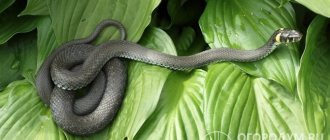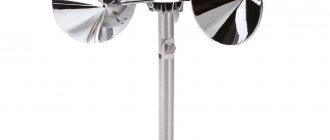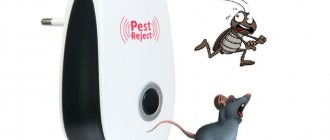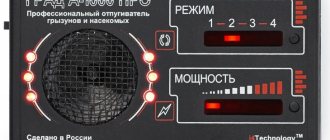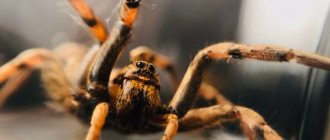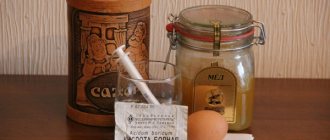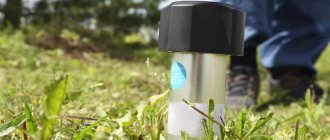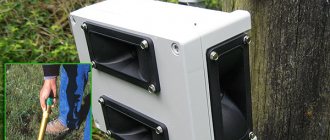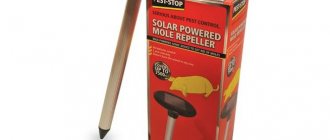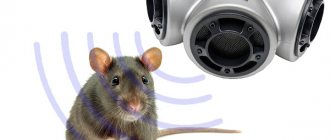The peaceful fight against snake infestations is very difficult to navigate. Everyone has long understood that killing reptiles is not the best solution. But humans clearly lack 100% effective repellents and barriers. There have been many rumors and myths about the same repellents since the time of our grandmothers. But scientists say that these traditions cannot be relied on: they are often completely useless.
Our review is based on advice from scientists and government experts. However, we also paid attention to the opinions of experienced farmers and hunters. What both scientists and amateurs definitely agree on is the inadmissibility of living together with creeping reptiles. Therefore, it is worth learning how to scare away a snake.
Are there effective snake repellents?
We are used to buying repellents to fight rodents, insects and other pests. After all, it’s great when you have the opportunity to create a liquid or dry barrier that will repel, but will not cripple a living creature. I would like to know how to scare away a snake, but it’s not that simple. Even official government sources contradict each other when it comes to the effectiveness of repellents. However, they all agree on one thing: there is no universal repellent against all types of snakes. What does science say about those products that still remain in people's memory and on store shelves?
Let's start with history. In the 50s, one could find recommendations for the use of toxic chemicals (from DDT and mercaptans to nicotine sulfate) against snakes, but all of them did not confirm 100% effectiveness. And later, most of the products based on them were banned. The same mercaptans in high concentrations, for example, have a bad effect on the human nervous system! Although their effect on non-venomous snakes has been proven.
Now on farmer forums and advertising sites you can find a very limited list of safer repellents and repellents based on them. But science does not fully recognize any of them.
Know a snake by sight: which reptiles may choose a summer cottage
In the middle zone and in the south of European Russia, in Ukraine and Belarus, it is most likely to meet representatives of six species of the squamate order, among which there are both poisonous and non-poisonous.
Poisonous snakes
The greatest danger comes from encounters with vipers . The bite of a viper is painful and dangerous (especially for children). The poison can cause severe poisoning and an allergic reaction, and if help is not provided, it can lead to serious consequences. The following vipers are most often found in garden plots.
Common viper . It is easily recognized by the zigzag black or brown stripe along its ridge. The upper part of the body is colored in gray and brownish tones with an olive tint. The belly is black or gray.
Vipers like to make their nests in damp places where there are a lot of rotten insects
Nikolsky's viper . Unlike the common viper, it is black in color, without spots or patterns.
Nikolsky's vipers are listed in the Red Book
Steppe viper. It is colored brownish-brown, with a dark brown zigzag stripe on the back.
Steppe vipers are able to camouflage themselves perfectly in the grass
Non-venomous snakes
The fact that when they bite, these scaly animals do not inject venom into the wound does not make the bite less painful and does not eliminate the threat of infection by microbes (snakes do not brush their teeth). Therefore, you should also be careful when meeting them. The most common are the following.
Snakes . The common snake is easily recognizable by the yellow or orange spots on the sides of its head.
In spring you can see the love games of snakes
Yellow-bellied snake (Caspian) . This is one of the largest snakes in Europe - it can reach up to 2 m in length. The color varies from olive and brown to black, the belly is light yellow. The snake is aggressive and its bites are painful.
When encountered, a snake can actively attack, making throws of 1.5-2 m
Common copperhead. A small snake up to 70 cm long. The color sometimes resembles that of vipers, but has a copper tint. Loves to sunbathe. In summer cottages, copperheads are rarely found.
Copperheads are often confused with vipers. One of the differences between copperheads is the round pupils of yellow or orange eyes.
We offer you to watch a video about the copperhead:
Rating of the best snake repellents
Best Ultrasonic Snake Repeller
Ultrasonic repeller HELP 80412 - helps keep snakes away from your area. The range of one such installation reaches 30 meters. The device creates vibrations that are unpleasant for most poisonous snakes living in Russia, thereby keeping them out of the range of the device. The repeller has a built-in battery and is charged from the sun.
Price: 1100 rub.
HELP glue trap - the best snake trap
The trap is larger than usual. It can be laid out in the form of a square mat with a side of 32 centimeters. Or you can roll it into an adhesive tube that will suck in a rat or mouse. The trap is made of simple materials: non-toxic glue and cardboard. The only shame is that the instructions do not indicate the types of snakes against which the trap works.
Price: 350 rub.
Biological snake repeller - the best snake repellent
We have more doubts about this product, despite its high rating among buyers. The sulfur remains here, but new ingredients from essential oils have been added. Their effectiveness has not been proven or really disproven, so Havahart still made it into our review. Here's what it contains: sulfur, cedar oil, cinnamon oil and clove oil. It seems like these pungent odors should also drive away snakes when they come into direct contact with sensory receptors.
The instructions say that a 20-centimeter barrier of Havahart Repellent can be poured around the entire plot of land and its specific objects: a garage, a trash can, a house... One of the advantages is the disappearance of the bad smell, overwhelmed by the artificial aroma of the forest. One of the downsides is the lack of description of the species of snakes against which it exactly works. We have already talked about the weakness of such “universal remedies”. However, 90% of users called Havahart a useful product. People complained only about the short duration of the chemical. As for us, we still cannot give an unambiguous recommendation to this bestseller. You can test these granules - but at your own risk.
Price: from 180 rub.
What to do if bitten by a viper?
- Call an ambulance and be sure to report the viper bite. Every hospital, clinic, every village paramedic station, and ambulance have Anti-Viper serum. They will definitely help you.
- Take 1-2 antihistamine tablets (not aspirin), drink about three liters of water in small portions.
- Move as little as possible (it is better to remain still) - muscle contractions speed up the absorption of the poison.
Some experts believe that in the first 5-10 minutes after a bite, part of the poison can be sucked out of the wound along with the blood and spat out. If there is no damage to the lips or mouth, it is safe. In the mouth and gastrointestinal tract, the poison is broken down by saliva and gastric juice - you cannot be poisoned by it. But most agree that sucking out the venom is dangerous, especially if you are not sure that it was a common viper that bit you.
After a snake bite, you should not apply tourniquets to your arms and legs, cauterize wounds, make incisions, or treat them with potassium permanganate. It is strictly forbidden to drink alcohol, and you cannot drink coffee.
Chemical snake repellents with mothballs and sulfur
Naphthalene
Firstly, these balls contain a very strong neurotoxin. If it gets into the mouth of a child or dog, all this could end badly. Secondly, science has not been able to prove its effectiveness against snakes. Scientists directly state: “Naphthalene is not a snake repellent.” If you don't believe the scientists, just watch the MythBusters episode. Adam Savage and company also destroyed this legend. And laboratory work with pure mothballs has shown that it is not a hindrance for snakes. Scientists Gary J. San Julian and David K. Woodward conducted an experiment to prove this: they placed a snake in a closed box, sprinkled repellent in front of it, and placed bait behind it - and almost always the animal ignored the mothball barrier.
Sulfur
Sulfur is not often used in its pure form against snakes. More often it is mixed with the same naphthalene. We can confidently write one thing about this mixture: it stinks strongly and is easily washed off by rain. It is possible that a certain concentration of the two ingredients could affect snakes. There is evidence of “limited effectiveness” of a number of registered drugs based on naphthalene and sulfur. This is also confirmed by the fact that a number of repellents “sulfur + naphthalene” still received a state license. They work best on rattlesnakes and checkered garter snakes, but... with caveats.
Snake-A-Way, made from 7% naphthalene and 28% sulfur, for example, has not passed laboratory testing. Rex E. Marsh of the University of California placed a strip of repellent on the floor of a room and introduced snakes into it one at a time. According to statistics, every second snake crossed the barrier more than once. And Snake-a-Way’s competitors have not earned their reputation as “universal repellents.”
Homemade and Natural Snake Repellents
You can scare away a snake with the help of folk repellents, which include fox urine, smoking smoke, diesel fuel and a mixture of mothballs with cat litter, lime and pepper-based sprays. But some scientists argue that all these remedies are ineffective. And experts also call diesel fuel very harmful to the environment: your green spaces and beneficial insects in the garden will not be happy with it. Although some researchers from America talk about its restrictive effect on rattlesnakes.
What about repellents made from natural essential oils? Such mixtures are common for controlling parasites in the garden, but nothing effective has yet been created against snakes.
How effective are snake repellents?
Let's start with the facts: Some scientists radically claim that all chemical repellents are ineffective against snakes. Perhaps this is due to the olfactory system of reptiles, because snakes sense odors using a forked tongue. This means that scents do not scare them away from a distance! And even with physical contact, she will feel it only if she touches the ground with her tongue.
What you definitely shouldn’t buy are products that position themselves as universal: like they are against spiders, and against snakes, and against rats... Many biologists are sure that these drugs are the worst. And don’t consider options with ultrasonic repellers. After all, snakes don’t have ears!
But still, popular snake repellers - powders and granules based on sulfur and naphthalene - aroused some interest in us. Experts are divided on them, so let's consider them as potential snake repellers! And a little later we will find out what ordinary users think about such repellents.
Necessary Precautions
If you suspect the presence of scaly insects on the territory of your garden plot and in the process of combating them, you should strictly adhere to the safety rules:
- wear high rubber shoes and watch where you step;
- do not try to catch reptiles yourself;
- do not pick up snake slithers or dead reptiles with your bare hands - their smell lingers on the skin for a long time and can lure their relatives;
- make more noise when walking, allowing the snake to crawl out of the way;
- Do not tease the snake - do not poke it with a stick, do not throw stones, etc.
How to protect yourself from snakes: snake traps and homemade fencing
Physical control measures against snakes may be more effective. They say that the best means of protection against creeping reptiles is a solid fence dug into the ground. In addition, different types of reptile traps are popular. Getting them is not that difficult.
- Snake fence
We have read a universal recipe for making a fence:
“Make a fence from galvanized mesh (mesh mesh is 6 mm), the height of the fence should be about 80 cm. Bury the lower part of the fence 7-15 cm into the ground, placing the posts inside the fence so that snakes do not crawl on them. You can build this fence alone or add it to an existing fence. Any gate must be tightly closed and without gaps. Inspect the fence regularly to make sure that there are no passages under it and that there are no foreign objects on the outside. Mow the grass and weeds around the fence and remember to keep the snake fence angled outward at a 30-degree angle.”
- Homemade snake trap
Experts favor the use of sticky traps to deter snakes. They do not kill the animal, but simply deprive it of the ability to move. Such traps are on sale. And the recipe for a homemade trap is described by zoologists from Washington:
“Place a sticky glue trap along an interior wall or foundation (based on the amount of sticky “pad” needed to catch a rat). Use plywood as a base for it. To avoid close contact with a frightened snake, you should have a special tool with a wooden handle and a hook at the end. To free a trapped snake, pour a little vegetable oil directly onto it - the oil will make the glue less sticky and allow the snake to crawl away."
- Pets
They can also be classified as methods of physical influence. Pigs, dogs and hedgehogs are thought to eat some species of creeping reptiles. But only the hedgehog does this with sufficient regularity. The rest, if they try a snake, will only do so if they are very hungry. You don't want to starve your pets, do you? And these favorites do not always emerge victorious from a battle with poisonous snakes. Therefore, we immediately discard this method.
More effective ways to fight
Not everyone knows how to drive snakes away from their summer cottage, so many people prefer to involve special services to solve this problem. But calling a herpetologist to your home every time to catch one snake is expensive. Such a visit is not always able to get rid of creeping reptiles once and for all: if you catch one, the next snake may crawl out of the forest in a day, two, or a week. Professional cleaning of the site and surrounding area helps. Such work is expensive, but the investment is fully repaid with peace of mind for the health of family members.
Herpetologists are specialists who can help in the fight against snakes Source pixanews.com
See also: Catalog of popular plots in the Moscow region for the construction of a country house
Manufacturers of repellent devices can tell you how to protect your area from snakes. There are different models on sale, but they all have the same effect: the devices produce noise, vibration or ultrasound. They are installed in places where evil spirits can possibly settle (near compost pits, dumped boards, garbage heaps).
Finding a suitable device will not be difficult if you know who exactly to scare away. For example, a viper is not afraid of ultrasound, but it crawls away when it feels strong vibrations on its way. In order to use repellent devices, you need to know what type of snake lives in your neighborhood and what model of the device is suitable for achieving your goals.
Repellent devices in the fight against creeping creatures Source images.kz.prom.st
Foreign remedies for snakes
Dr. T's 4-Pound Nature Products Snake Repelling Granules
As experts wrote, the mixture only repels rattlesnakes.
The pack contains almost 2 kg of granules (7% naphthalene and 28% sulfur). It should be enough for high-quality cultivation of 2 hectares of land. The developers do not hide that the snake will crawl away from the repellent only if the chemical gets on its “Jacobson’s organ.” If the sensory receptors are not affected, it will crawl further. Scatter Dr. T's Snake Repelling Granules need special gloves and strips 10-12 cm wide (for garden snakes) and 20-30 cm wide (for rattlesnakes). Even after light rain, these strips will have to be renewed. And, of course, you cannot use such a fragrant mixture indoors.
In product reviews, people write that it is stupid to spray the product near snake holes (for example, in a basement or woodpile). Otherwise, the snakes will be locked in them and will not leave your house until they die. Most dog owners admitted that their dogs don't care about the chemical at all. But all snake fighters keep the drug away from children. Of the adequate complaints, we found only grumbling about the bad aroma of the product. So you can try it.
Sweeney's 5200 All Out Snake Repellent, Granular, 4-Pound
Here, sulfur also disappears from the list of active ingredients, leaving only oils: clove oil, cinnamon oil and cedar oil.
We wrote above that experiments to test the effectiveness of oil mixtures are still ongoing. And the Sweeney company decided to get ahead of the scientists and has already released a similar batch - All Out Snake Repellent. People rated this product lower than the two competitors we reviewed above: only 71% of buyers found it useful. In the reviews we found information about the success of repelling black snakes, copperheads and garden snakes. However, gratitude and negativity in the comments alternate “50/50”. We have never seen so many disappointed reviews anywhere, so this product receives the lowest trust rating from us!
Catchmaster 402 Baited Rat, Mouse and Snake Glue Traps Professional Strength
Hidden in a small box are two traps for mice, snakes and rats.
There is no poison here, just a sticky surface. But there is one problem: it is only designed for small snakes. Users write that they caught reptiles weighing 900-1800 g, but definitely not larger. In addition, with such a trap it is necessary to calculate the possible routes of movement of reptiles. To bet at random means to risk that the snake may simply not crawl into the trap. After all, there are no normal baits for them (unless you stick a grasshopper with glue!). In general, this is a good option, but only for creeping little things.
Another trap is Humane Snake Trap by Snake Trap . This thing is more impressive in size. It is a full-fledged plastic trap, inside of which there is adhesive tape. However, judging by the reviews, its efficiency is lower than that of its competitors. This is understandable: inexpensive adhesive sheets can be scattered throughout the area, but buying several of these traps will be quite expensive. But, thanks to the closed format, no puppy or kitten will get into Humane Snake Trap. We have already encountered a couple of similar complaints about other traps.
However, in some reviews we found a recommendation not to use branded Velcro tapes against snakes, but to look for the most inexpensive sticky tapes against insects or mice. Or even make them from scrap materials! It’s a pity that these options have certainly not been tested by science!
Snake habits
In order to avoid encountering a snake and attracting it to your site, you need to know their habits. In terms of habits, reptiles are similar to humans.
- When there is prolonged heat, snakes seek shelter in cool places, in the shade, where the temperature is lower. In such cases, they can be found under bushes, among the tops of tall plants, and in the grass. It is possible that they can crawl into a house, basement, or barn.
- After long cool days with prolonged rains, the reptiles crawl out to bask in the sun.
- Snakes have very powerful senses. So if you kill a snake on your property, the killed snake must be taken away from the place where it was killed. Moreover, collect the soil in this place and also take it away from the site. And wash the murder weapon well with soap. There is a substance in the blood of a killed snake that resembles the smell of a snake during mating. Without doing this, you can get in return more than one viper crawling to this place.
